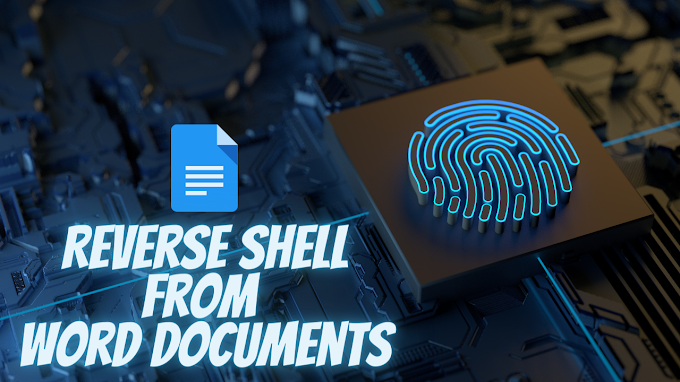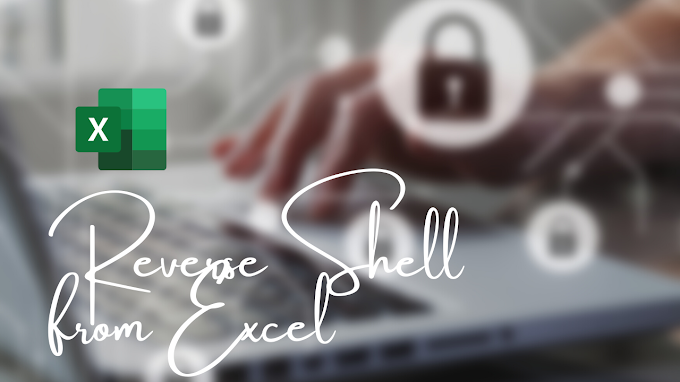High-level Overview
Session hijacking, a cybersecurity threat, involves
unauthorized access to a user's ongoing session, enabling attackers to control
it and potentially steal sensitive information. Securing user sessions is
pivotal as hijacked sessions pose risks of data theft, identity impersonation,
and privacy breaches, affecting individuals and businesses.
In my blog, I'll explore strategies to combat session
hijacking and delve into preventive measures like secure session handling,
employing refresh tokens, and effective token rotation strategies. Also, I'll
touch on the significance of user awareness and best practices for developers
to fortify defenses against session hijacking.
A. Explanation of Session Hijacking
Session hijacking refers to the unauthorized takeover of a
user's active session on a website or application. Attackers gain control by
exploiting vulnerabilities to intercept or steal session identifiers, allowing
them to impersonate the legitimate user. This attack enables malicious actors
to access sensitive information, perform actions on behalf of the victim, or
even manipulate data within the session.
Example: In a public
Wi-Fi setting, a hacker uses packet sniffing tools to intercept unencrypted
network traffic. They capture a session cookie containing authentication
details, allowing them to access the victim's account without proper
credentials.
B. Importance of Securing User Sessions
Securing user sessions is critical to prevent data breaches,
identity theft, and unauthorized access. Compromised sessions can lead to
financial loss, reputation damage, and legal consequences for both users and
organizations. Protecting these sessions ensures the integrity and
confidentiality of user data, fostering trust and user confidence in online
services.
Example: A successful session
hijacking attack on an e-commerce site can lead to the theft of users' payment
details, resulting in financial losses for both the customers and the business.
C. Overview of Mitigation Strategies
1. Secure Session Handling: Implement mechanisms like
expiring sessions, robust encryption (HTTPS), and strong session management to
minimize vulnerabilities.
2. Refresh Tokens: Use longer-lived refresh tokens to obtain
new access tokens, reducing the exposure of sensitive session data.
3. Token Rotation: Regularly refresh session tokens to limit
the window of opportunity for attackers and enhance security.
Example: Implementing
multi-factor authentication (MFA) as a part of session security adds an extra
layer of protection. Even if session tokens are compromised, MFA prevents
unauthorized access due to the additional authentication step.
Note: Explore a dynamic Spanish learning community! Engaging group sessions, fun activities, and unlimited classes, Mon-Fri, 24/7. Elevate your Spanish skills with interactive and enjoyable sessions! 🎉
Click here to start today
Click here to start today
II. Understanding Session Hijacking
A. Various Methods Used in Session Hijacking
1. Packet Sniffing
Packet sniffing involves intercepting and monitoring network
traffic to capture sensitive information like session cookies or tokens.
Attackers use tools like Wireshark to capture unencrypted data transmitted over
networks. For instance, an attacker can intercept packets to obtain session information on an unsecured public Wi-Fi.
2. Session Fixation
Session fixation is a technique where attackers force a
user's session ID to a known value controlled by them. This could be achieved
through phishing attacks or manipulating URLs to force the victim to use a
predetermined session ID. For example, an attacker sends a phishing email
containing a malicious link that sets the session ID.
3. Cross-Site Scripting (XSS)
XSS vulnerabilities enable attackers to inject malicious
scripts into web applications. These scripts can steal session cookies or
manipulate sessions. For instance, injecting a script into an input field on a
vulnerable website to steal users' session tokens.
4. Man-in-the-Middle (MITM) Attacks
In MITM attacks, the attacker intercepts communication
between a user and a web server, allowing them to eavesdrop on or modify the data
being transmitted. By doing so, they can steal session tokens or alter the data
exchanged between the user and the server. For instance, intercepting unsecured
communication on a compromised network to capture session tokens.
Each of these methods poses severe risks by compromising
user sessions, leading to unauthorized access, data theft, or manipulation of
sensitive information.
B. Real-life Implications and Risks for Users and Businesses
Session hijacking poses severe implications for both users
and businesses:
For Users:
·
Data Theft: Users risk having sensitive
information stolen, including financial details or personal data.
·
Identity Impersonation: Attackers can
impersonate users, leading to unauthorized actions or transactions.
·
Privacy Breach: Sessions compromised by
hijacking may expose private conversations or confidential information.
For Businesses:
·
Financial Loss: Businesses may incur financial
losses due to fraudulent transactions carried out via hijacked sessions.
·
Reputational Damage: Incidents of session
hijacking tarnish a business's reputation, leading to a loss of trust among
users.
·
Legal Implications: Breaching user privacy or
failing to secure sessions can lead to legal consequences and regulatory fines.
C. Examples or Case Studies Illustrating Session Hijacking Incidents
1.
Twitter Session Hijacking (2010): Hackers used a
session hijacking technique, obtaining administrative access to Twitter's
internal systems, and compromising high-profile accounts, including Barack Obama
and Bill Gates.
2.
Yahoo Session Hijacking (2014): Yahoo faced a
session hijacking incident where attackers stole session cookies, compromising
millions of accounts, resulting in a significant data breach.
3.
Facebook Session Hijacking (2017): Attackers
hijacked sessions by exploiting vulnerabilities, gaining access to users'
accounts, and using them for malicious activities.
4.
Zoom Session Hijacking (2020): With the sudden
surge in remote work, zoom experienced session hijacking incidents where
unauthorized users infiltrated meetings, disrupting sessions.
These real-life incidents highlight the widespread impact of
session hijacking, affecting prominent platforms and millions of users,
emphasizing the urgency for robust security measures to safeguard against such
attacks.
III. The Role of Session Tokens and Cookies
A. Explanation of Session Tokens and Cookies
1. Session Tokens:
Session tokens are unique identifiers generated by servers
to manage and authenticate user sessions. These tokens serve as temporary keys,
granting access to specific resources or functionalities for the duration of a
session. They help servers recognize users' authentication states, enabling
secure interactions while users navigate web applications. Session tokens are
often utilized in authentication mechanisms to verify a user's identity for
each request.
2. Cookies:
Cookies are small pieces of data stored on a user's device by websites they visit. They serve various purposes, including session management. Session cookies, a type of cookie, store session IDs or other session-related information. They help maintain a user's session state across multiple requests and visits to a website. Cookies facilitate personalization, authentication, and tracking of user preferences during web sessions. However, they can also be susceptible to manipulation and exploitation.
B. How Session Tokens and Cookies Can Be Compromised
1. Session Token Compromise:
·
Session Hijacking: Attackers steal or predict
valid session tokens to gain unauthorized access to web servers or user
accounts. This can occur through techniques like session sniffing, where
attackers intercept and steal session tokens from network traffic.
·
Session Fixation: Attackers force users to use a
known session ID, allowing the attacker to exploit the session once the user
authenticates with the fixed session ID.
2. Cookie Compromise:
Cookie Poisoning: Attackers manipulate or tamper with
cookies, altering their content to gain unauthorized access or impersonate
legitimate users. Cookie poisoning involves modifying cookies to bypass
authentication or inject malicious code.
Session Sidejacking: Hackers intercept unencrypted cookies
over a network to hijack sessions, gaining access to sensitive data or user
accounts without direct access to credentials.
C. Impact of Stolen Session Tokens on User Accounts
1. Unauthorized Access:
· Data Breaches: Compromised session tokens can lead to unauthorized access to sensitive user information, resulting in data breaches.
· Identity Theft: Attackers can exploit stolen session tokens to impersonate users, perform actions on their behalf, or access personal data.
2. Financial and Reputational Loss:
· Financial Fraud: Stolen tokens can enable financial fraud, causing monetary loss to users or businesses.
·
Reputational Damage: Incidents involving
compromised session tokens can tarnish a company's reputation, affecting user
trust and loyalty.
Examples:
· Session Token Compromise: An attacker performs a session hijacking attack by intercepting unencrypted session tokens over a public Wi-Fi network, gaining unauthorized access to a user's account.
·
Cookie Compromise: An instance of cookie
poisoning occurs when an attacker manipulates a session cookie's content to
escalate privileges and access restricted website areas.
Understanding the vulnerabilities associated with session
tokens and cookies is essential for implementing robust security measures to
safeguard user accounts and sensitive data.
IV. Mitigation Strategies
A. Implementing Secure Session Handling Mechanisms
1. Expiring Sessions After a Certain Period:
Explanation: Implementing session expiration is crucial in
limiting the lifespan of user sessions. By setting a specific timeframe for a
session's validity, the risk of prolonged exposure to session hijacking attacks
diminishes. Users are automatically logged out after a defined period of
inactivity or a specific duration, requiring reauthentication to access
sensitive resources.
Example: Consider an online
banking application that enforces a session expiration policy of 15 minutes. If
a user remains inactive for 15 minutes, the session is terminated, and the user
is required to log in again to continue banking activities.
2. Strong Session Encryption Using HTTPS:
Explanation: Hypertext Transfer Protocol Secure (HTTPS)
employs Transport Layer Security (TLS) encryption to secure communications
between web servers and users' browsers. This encryption safeguards session
data, preventing eavesdropping or interception of sensitive information
exchanged during user sessions. It ensures data confidentiality, integrity, and
authenticity.
Example: An e-commerce
platform deploys HTTPS across its website. When customers make purchases or
input personal information, all data exchanged, including session tokens, is
encrypted. Even if intercepted, the encrypted data remains indecipherable to
unauthorized entities.
B. Use of Refresh Tokens
1. Explanation of Refresh Tokens and Their Purpose
Refresh tokens are a key element in authentication systems,
particularly in conjunction with access tokens in OAuth 2.0 or similar
authorization frameworks. They serve the primary purpose of allowing users to
obtain a new access token without requiring reauthentication. Here's a
breakdown:
Purpose: Refresh tokens are issued to clients during the
authentication process and act as a credential to obtain fresh access tokens
from the authentication server without the user needing to log in again. They
enhance the user experience by extending the validity of access to a service or
application without requesting the user's credentials repeatedly.
Usage: Once a user is authenticated and provided with an
access token, the refresh token comes into play when the access token expires
or needs renewal. The client application utilizes the refresh token to request
a new access token from the authorization server, extending access duration
without needing the user's credentials.
2. Benefits of Using Refresh Tokens in Combating Session Hijacking
Refresh tokens play a pivotal role in mitigating session
hijacking and enhancing security in various ways:
Reduced Exposure: Refresh tokens have a longer lifespan
compared to access tokens. By enabling the refresh token, the access token's
validity can be shortened, thereby minimizing the exposure window. Even if an
access token is compromised, the risk is limited due to its shorter lifespan.
Enhanced Security Practices: Implementing rotating or
rotating-like refresh tokens helps in detecting and mitigating session
hijacking attempts. The rotation mechanism involves regular renewal of refresh
tokens after each usage, reducing the chance of misuse if stolen or
compromised.
Improved User Experience: Refresh tokens enable seamless,
behind-the-scenes token renewal, ensuring uninterrupted service for users
without frequent logins. This enhances usability while maintaining a robust
security posture.
Refresh tokens, with their ability to provide seamless
access token renewal, contribute significantly to security practices,
diminishing the vulnerabilities associated with session hijacking.
C. Token Rotation Strategies
1. Regularly Refreshing Tokens to Prevent Prolonged Access
Regular token refreshment is crucial to maintain security in
authentication systems. Tokens, like access and refresh tokens in OAuth 2.0,
should have limited lifespans to reduce the window of vulnerability. Here's a
breakdown:
Purpose: Tokens, especially access tokens, grant access to
resources or services. Regular refreshing ensures that if compromised, their
validity is short-lived, minimizing the risk of unauthorized access. It's
essential for preventing prolonged access using stolen or leaked tokens.
Example: In OAuth 2.0, access
tokens have shorter lifetimes, usually minutes to hours, encouraging their
regular refresh to obtain a fresh token without reauthentication. Refreshing
these tokens mitigates the chances of misuse if they fall into the wrong hands.
2. Best Practices for Securely Managing and Rotating Tokens
Token rotation practices aim to enhance security and manage
the risk associated with long-lived tokens. Some best practices include:
Rotation Mechanisms: Implement rotation mechanisms where
tokens are regularly regenerated. This includes using refresh tokens that
change after use or enforcing access token rotation after a certain period of
usage.
Storage and Protection: Securely store and protect tokens,
avoiding hardcoded tokens in code repositories or client-side storage. Use
secure storage mechanisms like environment variables, key management systems,
or token vaults.
Token rotation strategies not only reinforce security but
also align with industry best practices, reducing the impact of potential token
compromises.
D. Other Preventative Measures
1. Multi-Factor Authentication (MFA)
Explanation: Multi-factor authentication (MFA) adds an extra
layer of security by requiring users to provide multiple credentials to access
an account or system. It typically involves something the user knows (like a
password), something they have (like a phone for a text code), or something
they are (like biometric data). MFA significantly enhances security compared to
traditional password-only authentication.
Example: For instance, after
entering a password, a user might receive a one-time code on their registered
mobile device. This code, coupled with the password, grants access. This
additional step makes it harder for unauthorized users to gain entry, even if
they've acquired the password.
2. Educating Users about Session Security and Best Practices
Explanation: User education is pivotal in maintaining robust
session security. Educating users involves raising awareness about best
practices, including recognizing phishing attempts, avoiding public Wi-Fi for
sensitive activities, logging out from devices after use, regularly updating
passwords, and understanding how to recognize and report suspicious activities.
Example: An organization
could conduct regular training sessions, distribute informative materials, or
provide guidelines on secure practices. For instance, teaching users to verify
URLs before entering credentials or not clicking on suspicious links sent via
emails can prevent phishing attacks.
Educating users ensures they understand the importance of security measures and actively participate in safeguarding their accounts and data.
This approach, coupled with MFA, significantly reduces the
risks associated with unauthorized access, data breaches, and compromised
sessions.
V. Best Practices
A. Secure Coding Practices to Prevent Session Hijacking Vulnerabilities
Developers can employ various secure coding practices to
prevent session hijacking:
1. HTTPS Implementation: Always use HTTPS to encrypt data
transmitted between the user and the server, preventing interception of
sensitive information during sessions.
2. Session ID Management: Generate and manage session IDs
securely. Avoid predictable or easily guessable session IDs to reduce the risk
of attackers hijacking active sessions.
B. Importance of Regular Security Updates and Patches
Regular security updates and patches are crucial for
maintaining system integrity:
1. Vulnerability Mitigation: Regularly applying patches
helps mitigate known vulnerabilities and weaknesses in software or systems.
2. Protection Against Exploits: Outdated systems are prone
to exploitation by attackers. Timely updates safeguard against evolving threats
and security loopholes.
C. Guidelines for Securely Storing and Transmitting Session Tokens
Securely managing session tokens is pivotal for safeguarding
user sessions:
1. Token Storage: Store tokens in secure locations. Browser
memory or encrypted databases are recommended to prevent unauthorized access to
session tokens.
2. Transmission Security: Use secure transmission channels
and encryption mechanisms (like TLS) to protect session tokens during
communication between the client and server.
D. Encouraging Users to Log Out and Avoid Sharing Credentials
Logging out of
sessions after use is fundamental in safeguarding personal accounts, especially
on shared or public devices. It prevents unauthorized access and reduces the
risk of session hijacking. Emphasizing the importance of logging out,
particularly from devices accessible to others, is crucial.
Furthermore,
educating users about the dangers of sharing login credentials is pivotal.
Encouraging unique and robust passwords, coupled with two-factor
authentication (2FA), can significantly fortify account security. Users must
comprehend the significance of safeguarding their login information to thwart
potential threats.
E. Recommendations for Securing Personal Devices and Browsers
Educating users about secure browsing habits such as
avoiding suspicious websites, enabling browser security features, and using
ad-blockers to mitigate potential risks associated with malicious scripts and
advertisements are key preventive measures.
By implementing these best practices, developers can
significantly reduce the risks associated with session hijacking,
vulnerabilities, and unauthorized access to sensitive information.
Conclusion
In this digital age, cybersecurity transcends individual
responsibility; it's a shared duty. As developers, users, and content creators,
our collective efforts in adopting secure coding practices, raising user
awareness, and leveraging trusted resources forge a more secure digital world.
In closing, I’m reminded of the power vested in each action
we take in the digital realm. Every secure password, every user educated, and
every resource shared serves as a brick in the fortress of cybersecurity. As we
navigate the evolving digital landscape, let us remain committed to empowering
ourselves and others, ensuring a safer and more secure online future for all.
With knowledge as our guiding light and collaboration as our
strength, let’s embark on this journey towards a more resilient and secure
digital universe.













